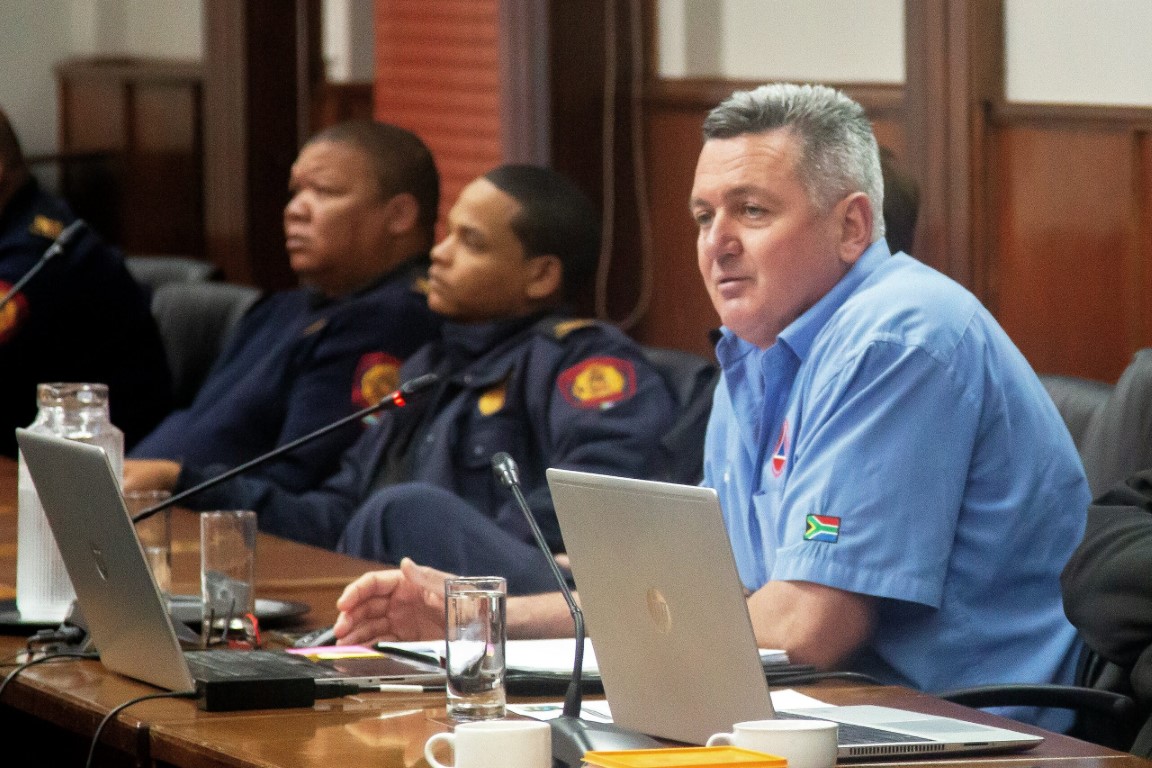GEORGE NEWS - George Municipality will be struggling to recoup the money it had spent on rescue efforts from the developer of the collapsed Neo Victoria building, according to the municipal manager, Godfrey Louw.
During a submission to the Western Cape Standing Committee on Infrastructure on Friday 2 May, Louw gave a breakdown of the expenses that totalled R9.295m and included infrastructure repairs, material removal from the site, and safeguarding the site.
"The municipality has in terms of the Municipal Systems Act issued an account to the now defunct company and the account was about just over R8m.
"This Neo Victoria company has been liquidated in December last year, so we are now sitting with a shell company, and obviously the municipality needs to recover its cost. That is going to be a tedious process," said Louw.
He said the amount does not include the goodwill and donations from contractors and service providers.
The municipality also received a fine from the national aviation authority for flying a drone illegally during this period.
Both George Municipality and the Garden Route District Municipality (GRDM) were invited to appear before the committee regarding the Neo Victoria building collapse.
George Fire Chief Neels Barnard, GRDM Fire Chief Deon Stoffels and Garden Route Disaster Management's Chief Gerhard Otto gave a review of their experience during the rescue efforts.
 Garden Route District Disaster Management Chief Gerhard Otto. George Herald stock photo
Garden Route District Disaster Management Chief Gerhard Otto. George Herald stock photo
Otto said one of the initial challenges they faced was that they had not known how many people they were looking for, because of poor record-keeping by the contractor. They also struggled to gain access to these records that had been 'captured' by one of the departments, and they had to get the police in to help obtain this information.
Eventually, the contractor came on board and during meetings, "night after night", they were able to find out exactly how many people were on site and where they were located.
Many of the people they found were undocumented foreign nationals. Many had their papers on them.
A five-hour wait for response equipment to be brought in from Worcester hampered initial rescue efforts. "If it [the equipment] was closer, it would have helped and more people could perhaps have been rescued earlier."
The flood of doctors and people who pitched up to volunteer their services proved difficult to manage initially. "At one stage, more than 1 000 people had access bands. Arranging everything on-site was a challenge - our colleagues at George Municipality had their hands full."

First 4 hours
Stoffels related how, in the first four hours, 20 people had been rescued and two bodies were recovered.
He mentioned that two of the longest rescues took 13 and eight hours respectively. As time went on, one of the most difficult decisions was to bring in and apply heavy-duty equipment to break down concrete slabs.
Otto added that without all the various stakeholders and volunteers' involvement, the rescue efforts would have been impossible.
Minister Simelane
Thembi Simelane, the national minister of human settlements, who had also been invited by the Standing Committee to appear regarding the National Home Builders Registration Council (NHBRC) report that her department had ordered, did not show up.
She had publicly declared this report as being final at a media briefing on 9 April, where she had also mentioned some of the conclusions of the report, including that there had been serious slip-ups by the NHBRC. She said that all the recommendations of the report would be implemented.
According to the committee chairperson, Dirk Wessels, Simelane had initially verbally confirmed her attendance, but in a letter dated 30 April, she declined the invitation. He pointed out that she had contradicted herself in the letter, writing that "the NHBRC report has not been finalised, and forms part of a broader government report still being compiled".
Wessels said her absence was disappointing, since she had previously publicly communicated on the contents of the NHBRC report.
Following the meeting, MPP Brett Herron, secretary general of the political party GOOD, said in a media statement the Western Cape Provincial Government, despite completing its own (engineering) investigation, had failed to present the final report.
Herron said if the committee was serious about uncovering the truth, it had to summon the premier, the legal advisor, the investigators (V3 Engineering) and the provincial police commissioner.
The Western Cape MEC for Infrastructure, Tertuis Simmers, said at the meeting that the SAPS would be the appropriate authority to convey the findings of this report, as it forms part of their criminal investigation. "Nobody is hiding anything."
Wessels' response was that a legal opinion would be obtained on the tabling of the Western Cape engineering report, and also on Minister Simelane making the NHBRC report public through media channels.
"Every investigation report into this tragedy conducted by national, provincial and local government will be interrogated by the Standing Committee on Infrastructure, because this event demands sustained oversight to prevent future tragedies from occurring."
 Dirk Wessels, chair of the Western Cape Standing Committee on Infrastructure.
Dirk Wessels, chair of the Western Cape Standing Committee on Infrastructure.
Previous articles:
‘We bring you the latest Garden Route, Hessequa, Karoo news’
















